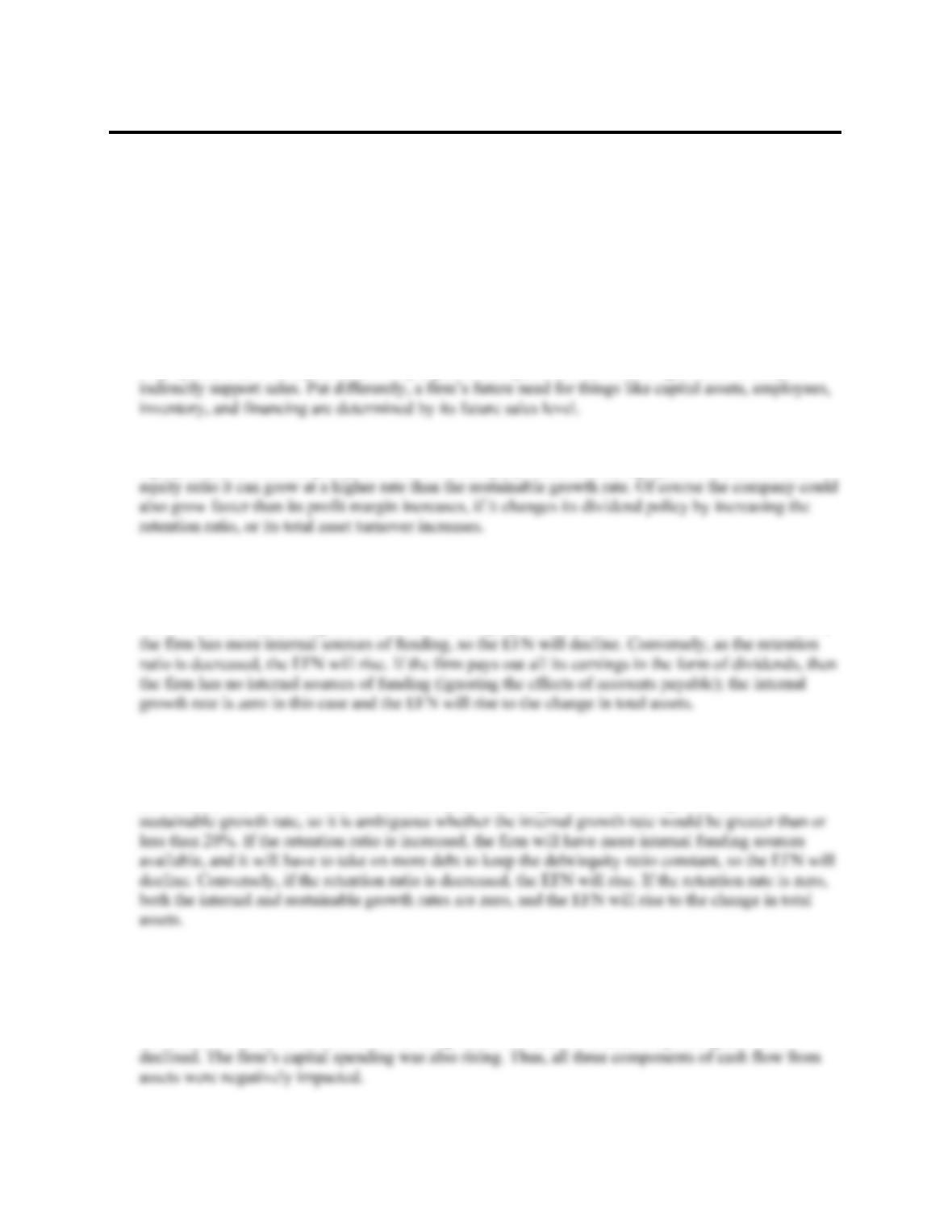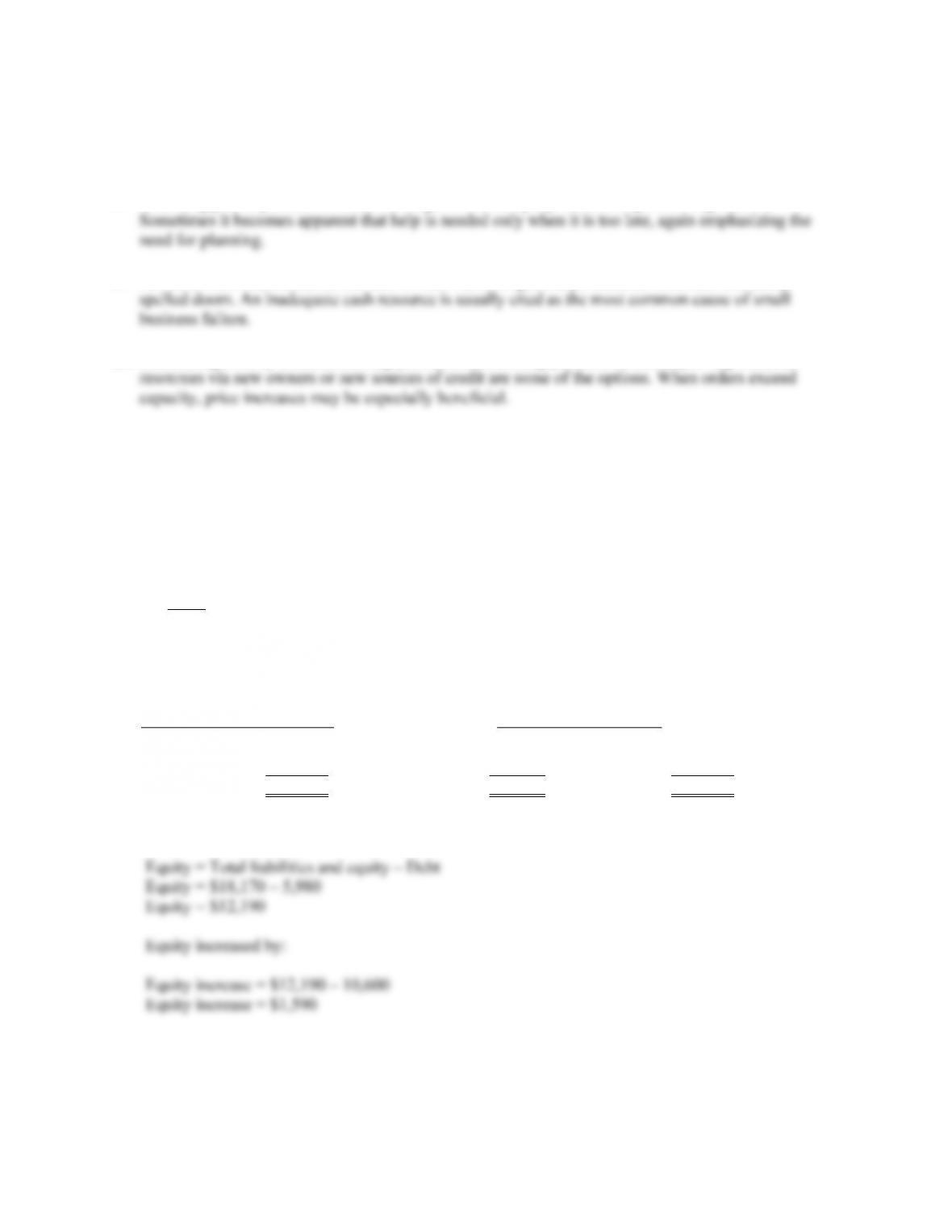CHAPTER 4
LONG-TERM FINANCIAL PLANNING
AND GROWTH
Answers to Concepts Review and Critical Thinking Questions
1. The reason is that, ultimately, sales are the driving force behind a business. A firm’s assets,
employees, and, in fact, just about every aspect of its operations and financing exist to directly or
2. Two assumptions of the sustainable growth formula are that the company does not want to sell new
equity, and that financial policy is fixed. If the company raises outside equity, or increases its debt-
3. The internal growth rate is greater than 15%, because at a 15% growth rate the negative EFN
indicates that there is excess internal financing. If the internal growth rate is greater than 15%, then
the sustainable growth rate is certainly greater than 15%, because there is additional debt financing
used in that case (assuming the firm is not 100% equity-financed). As the retention ratio is increased,
4. The sustainable growth rate is greater than 20%, because at a 20% growth rate the negative EFN
indicates that there is excess financing still available. If the firm is 100% equity financed, then the
sustainable and internal growth rates are equal and the internal growth rate would be greater than
20%. However, when the firm has some debt, the internal growth rate is always less than the
5. Presumably not, but, of course, if the product had been much less popular, then a similar fate would
have awaited due to lack of sales.
6. Since customers did not pay until shipment, receivables rose. The firm’s NWC, but not its cash,
increased. At the same time, costs were rising faster than cash revenues, so operating cash flow



